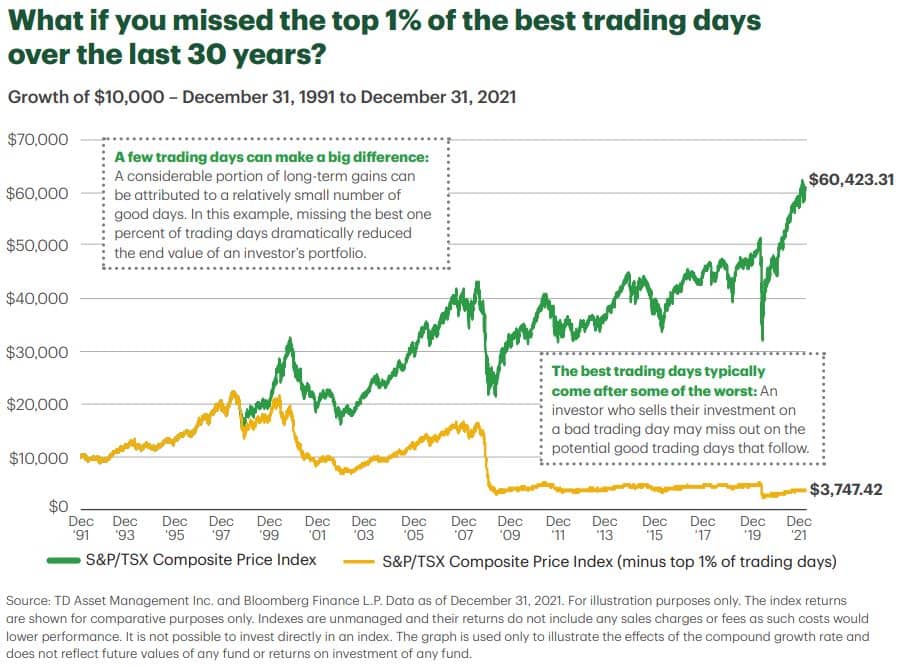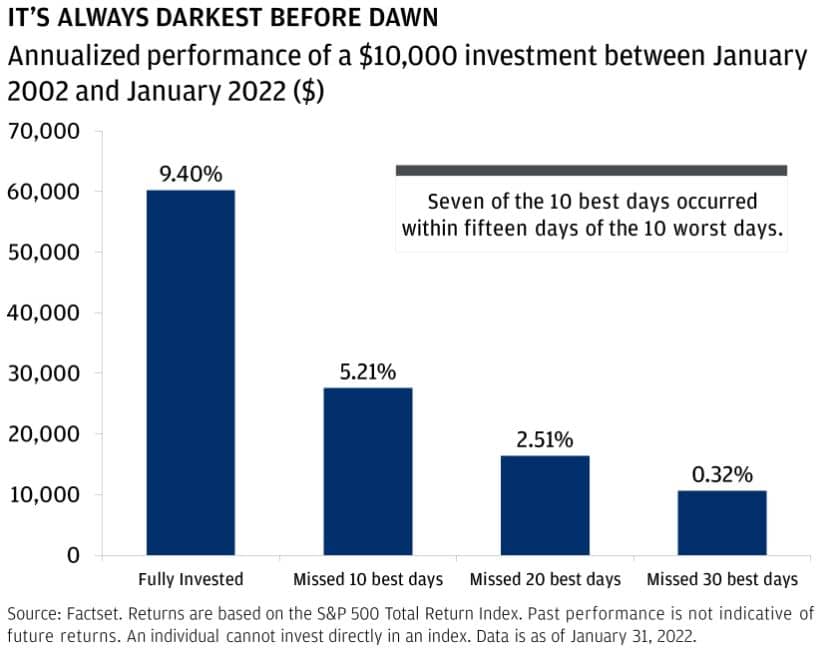Times are tough in the financial markets. The world is suffering inflation, conflict, and pessimism; current affairs are wreaking havoc on portfolios around the globe. Seeing your returns in the red is never “fun”, yet too many people give in to fear and cash out their investments thinking it’s the safest thing to do, realising their losses when staying invested is key – here’s why.
I get it. You’ve invested your hard-earned cash and now there are losses from your initial capital – this wasn’t supposed to happen, right?!… Thing is, if you didn’t anticipate this to be a part of your investment journey, you didn’t do enough research going in.
Focus On The Long Term
Losses happen. Simple as that. But you have to understand what a loss means in its investment context, and importantly in the context of your investment timeline.
“An unrealized loss is just a ‘paper’ loss, just as an unrealized gain is only a paper gain. Until you sell, the loss isn’t set in stone…If the investor chooses to not sell, continues to hold the asset and lets the loss go unrealized, there’s always the possibility that the price will recover to a level where there is no longer a loss and may even create a paper profit” (Anthony Denier, CEO of trading platform Webull)
Long-term investors have time on their hands and should ensure that they focus on their investment horizon, not what’s happening in the relatively short term, especially in the early days of their portfolios.
The markets are generally up three out of every four years, which means over a period of 20+ years you’ll have made significant gains over the times of losses; for most investors primarily investing for their retirement, an all-weather portfolio can withstand these downturns.
The S&P is a good indicator of the general health of the financial markets, and fundamentally the data reveals there is a generally positive trend over the many years it has been up and running, further clarifying why time is on your side:
Control Your Emotions
Some of the worst investment decisions happen when people get fearful. Investors see their portfolios enter the red and panic, often selling their investments in hopes of “saving” themselves from making more losses when in reality this doubles down on the loss itself. Markets rebound and many investors miss the best days by pulling out, whereas they would regain their original capital – and more – by simply staying put. You have to keep a cool head when times are tough.
And this is where focusing on your long-term view and understanding the financial markets becomes absolutely essential so that you don’t allow your emotions to negatively impact your portfolio. Generally, it is far better to have simply remained invested than to try and move money in and out – do not try to “time” the market, as most people fail; those that succeed mostly just get lucky… though, you’ll hear them brag about it at the pub no doubt.
Check out the graphs below which evidence how much can be lost by missing a few days of trading – it really pays to stay invested when there are moments of “crisis”.
Value Diversification
Never put all your eggs in one basket – you’ve probably heard that one before, and when it comes to investing diversification will make staying invested during downturns easier to manage.
Think about it like this: putting all your money in, say, Technology funds, may see your gains rise when this sector is doing well, which is great to see…but if it falls, this means your entire portfolio falls, as you are only focused in one area. Tech is volatile, meaning the returns may swing drastically; focusing on one area means you rise and fall in line with it.
Being diversified means you will take part in the rises and falls of different areas, thereby spreading your risk, navigating volatility and cutting losses from being too large; this will naturally ease the pain of seeing a portfolio fall too low and stopping fear from leading you to cash out.
You’d be extremely lucky to avoid taking losses at some point in your investment timeline. However, pairing an all-weather and diversified approach, alongside remaining invested throughout, will serve you well over the long run. Remember your strategy.
Need some financial advice? I’m here to help!
If you have any questions, are seeking wealth management, or just a chat — drop me an email at:



